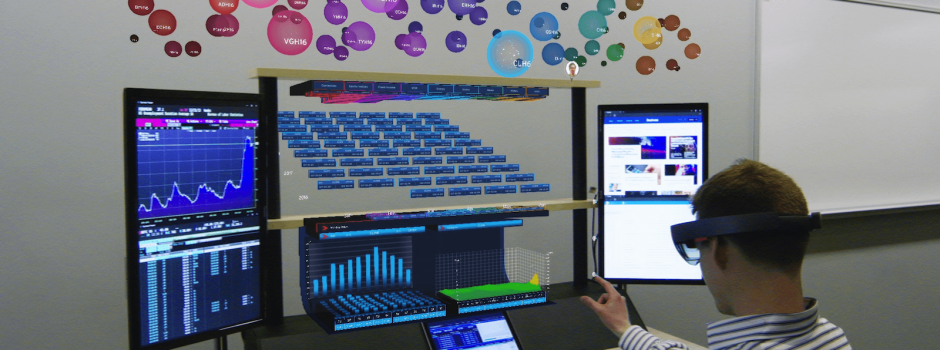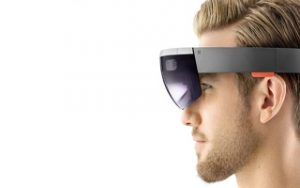
Microsoft’s HoloLens speaks to the undefined potential of augmented reality.
In January 2015, Microsoft revealed HoloLens, an augmented reality headset aimed at blending the physical and digital worlds. The headset would have its own graphics processing unit, allowing the user to move freely instead of being tethered, and the demo video showed various uses from watching Netflix as if projected on a wall, to working on 3D product designs.
At events since, Microsoft’s shown off live demos, like one where the user can play with the popular game Minecraft, and released a few important details, like a $3,000 price tag for the developer kit, as well as partnerships with companies like Lowe’s.
What does it mean for business?
- Hololens is a headset that facilitates an augmented reality experience where your real world is blended with your digital world.
- HoloLens is the first fully untethered holographic computer. The headset includes motion sensors, spatial sound, and transparent lenses. Microsoft built a holographic processing unit to power the headset.
- The technology has advanced enough to allow developers to commence creating immersive experiences.
Citi, in a partnership with VR design firm 8ninths, has developed a working proof-of-concept for a virtual trading desk, using Microsoft’s HoloLens headset.
The HoloLens device focuses on an division of VR known as augmented reality—adding a digital interface on top of your real-world environment. For traders, this means layering in tools for visualizing complex data sets. The firm believes that this technology will not only be useful for its traders, but its trading partners and customers as well, says Stuart Riley, global head of technology for markets and securities services at Citi.
Citi also is looking at how virtual and augmented reality might be applied to other areas of finance, like wealth management. Rival Wells Fargo has been making use of Facebook’s Oculus Rift headset to let customers virtually interact with bank tellers.
